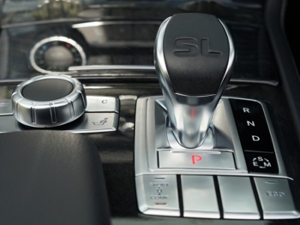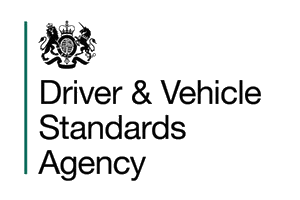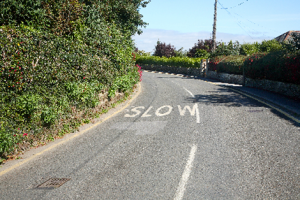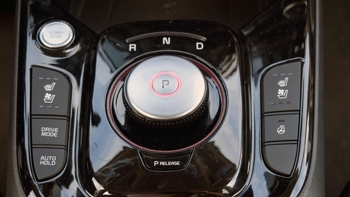
If your answer to the question "What gear should I be in when driving in town?" is "Jeans and a T-shirt", make sure that you read this section carefully!
 In a manual car, gears allow the driver to use the engine as efficiently as possible - they enable you to control the vehicle in various situations at different speeds.
In a manual car, gears allow the driver to use the engine as efficiently as possible - they enable you to control the vehicle in various situations at different speeds.
In automatic and hybrid* cars, gears have the same function as in a manual - but the car does the gear changing for you.
* In this programme we 'assume' all hybrids to be automatic. Some cars have a small electric motor that can assist the car's engine but cannot drive the car without the main engine, these are described as 'mild hybrids', and can have manual transmission. The techniques needed for manual 'mild hybrids' are the same as for a manual car.
If you are learning in an electric car, there are no gears - but your licence will allow you to drive an automatic.
If you have ridden a bicycle, you will know that gears help you use your energy efficiently. The gears in a car work in much the same way, helping you get maximum efficiency from the engine in different situations.
The best way to understand the gears is to practice using them.
When you practise gear use, don't be afraid to try different gears to see what happens, you can do this in both manual and automatic cars- in the worst-case scenario, you could stall in a manual car.
Change up through the gears as the speed increases
Change down when you need more power from the engine because there is not enough power in your current gear
Remember that in an automatic/hybrid, the car does these things for you
At this stage in your training, you will just be learning the basics of gear changing. However, the more that you understand about the gears, the better.
This lesson considers how and when to change gear in a manual car, including information about 'skipping' gears. We also look at the gear selector for automatic transmission and basic driving in an electric vehicle.
This lesson considers how and when to change gear in a manual car, including information about 'skipping' gears. We also look at the gear selector for automatic transmission and basic driving in an electric vehicle.
 The examiner will want to see that:
The examiner will want to see that:
(Manual) the gears you choose match the speed of the car
(Manual) you select the appropriate gear for the situation - for example, changing to a lower gear when descending a hill
(Manual) your gear changes are smooth
(Manual) you use the gears in an eco-friendly way
(Automatic) you use the gear selector correctly
(Manual) you drive in an eco-friendly way without causing the car to make unnecessary downward gear changes
(Electric) you drive smoothly and in an eco-friendly way

You change gear when increasing or decreasing speed.
Each gear has a range of speeds; when you need to move outside this range, by driving faster or slower, you change gear.
1st gear is used for very slow speed
You will use 1st when moving off, doing slow-speed manoeuvres and moving slowly in traffic, for example, when edging forwards to get a better view at junctions.
2nd gear allows for a higher speed than 1st.
2nd is used when building up speed after moving off and for slower speed driving, for example, turning left or right at junctions. It can sometimes be used when making downhill starts.
3rd usually allows the most flexibility with speed.
Typically 3rd is used for flexibility and control at hazards or when you need extra power, for example, when climbing hills or overtaking. 3rd can also hold the car back when going down steep hills.
4th gear is a general 'clear road' gear.
Use 4th for speeds above around 25/30mph where the road is clear and you don't need the flexibility of 3rd gear.
Most cars have a 5th gear and many have a 6th (some high end performance sports cars have seven gears!).
Most cars have a 5th gear, and many have a 6th (some high-end performance sports cars have seven gears!).
These are cruising gears used on open roads where you can travel at higher speeds while keeping your speed reasonably consistent.
You don't have to change through the gears in any specific order. For example, you can change directly from fourth to second gear (despite what your dad says!) But you must make sure that your speed matches the gear you are changing into (more about this below).
Experienced drivers develop a 'feel' for when to change gear. You will quickly learn to develop this feel by listening to the engine, feeling the car's vibration, or watching the rev counter.
There are a few 'nearly always' rules for gears:
When turning from main roads into side roads you will almost always use second gear.
When turning from side roads to main roads you will nearly always use first gear.
In town-driving, you will almost always use second and third more than fourth or fifth.

Having said all of this, with experience, you will soon be selecting the best gear for the situation almost without realising that you are doing it!
Keeping the clutch pressed down after a gear change defeats the object of selecting the gear.
Keeping the clutch down for more than a few moments on the move is called coasting and is dangerous because it reduces your control of the car.
Make sure that you bring the clutch pedal up smoothly every time you change gear and get into the habit of resting your left foot on the floor between gear changes. Resting your foot on the floor reduces fatigue on long journeys and the risk of premature wear to the transmission system.

Changing up to a higher gear
Clutch down
Release the gas pedal
Move the gear lever
Clutch up gently
Press the gas pedal gently
Changing down to a lower gear
Reduce speed by decelerating or braking
Stay off the gas pedal, and press the clutch down
Move the gear lever
Clutch up gently
Press the gas pedal gently
Although it might seem obvious that you should not look down at the gear lever when you are driving - because you need to watch where you are going - many new drivers glance down subconsciously.
Make sure that you don't develop this bad habit of looking at the gear lever - make a conscious effort to look well ahead when changing gear.

Some drivers have always been in the habit of changing through the gears one by one (1,2,3,4,5 - 5,4,3,2,1).
This method of driving was commonly taught well into the 1990s. But this is not the best way to use gears in modern cars.
Over the years, motor car design and engineering have improved with more efficient engines and braking systems - cars today have far better performance and handling than cars of even 20 years ago.
The driving method that was essential in older cars is no longer appropriate. You can slow down without changing to a lower gear.
Change gear when power is needed to keep the car moving; if you stop, you don't need to change gear until you need power to move off again) - this is the gear change method preferred by the Driving Standards Agency.
Use your brakes to slow and change gear when you want to go.

In the same way that you can stop the car without changing down through the gears, it is not necessary to change gears in sequence.
Use the brakes until you reach the speed you need, then change to the best gear for that speed. Missing out (skipping) intermediate gears is sometimes referred to as 'block gear changing'.
For example:
If you are driving along a main road at 40mph in 5th gear, and you intend to turn left into a side road, you might be able to do so without having to stop.
As you approach the junction, slow down with the footbrake until you are going slowly enough to turn safely, then select a gear that will drive the car comfortably around the corner. In most cars, this will be 2nd.
Driving in this way is more economical, with several safety benefits relating to driver concentration, fatigue and vehicle control. The combined benefits make this more efficient than the old gear changing method.
You will often miss out gears when slowing down, but you can also skip gears when speeding up in some circumstances. For example, if you changed down to third gear for extra power when overtaking and accelerated to 40 or 50 mph, you could change directly to 5th gear to continue cruising at that speed, missing out 4th.
Your instructor will help you to learn when skipping gears is useful.
If the person you practise with between lessons is unsure about skipping gears, show them this page!

From a driving point of view, automatic, hybrid and electric cars have one thing in common, the driver doesn't have to change gear.
When getting into a car with automatic transmission, the first thing you notice is that there are only two pedals - automatics don't have a clutch.
In an 'automatic', the car changes gear automatically without your direct intervention.
Automatics still have gears, typically anything from three to seven, but you don't have to do anything to operate them except for some limited, specific circumstances.
Some modern cars have different settings for the gear selector, operated by engine management wizardry. These settings allow you to choose different driving modes depending on the traffic conditions and your mood (for example, you might have a 'sport' setting) - some will also allow you to change gear manually.
All the driver has to do in an automatic is stay awake, steer, brake and accelerate.
 Modern automatic cars will usually have four main selector positions.
Modern automatic cars will usually have four main selector positions.
P = Park: Use this when leaving the vehicle parked. In many automatics, you can't move the leaver out of the Park position if the engine is not running.
Top tip: Develop a habit of applying the handbrake before selecting Park. If you select Park first, the car can move slightly when you release the footbrake putting pressure on the mechanism - in a worst-case scenario, this could jam the transmission needing a breakdown mechanic to fix it.
R = Reverse: You might have guessed this one!
N = Neutral: If you are waiting for a while, for example, at a red traffic light, it's good practice to use the handbrake and move the lever to N. Neutral is also used if the car needs to be towed after a breakdown.
D = Drive: This is the position for everyday driving. When D is selected, the car will automatically change to the best gear for your speed and the engine's workload (for example, it has to work harder when going uphill).
If you look closely at the picture, you will see '+' and '-' symbols above the offset slot on the left.
Some automatics have an extra position that allows the driver to move the lever forwards and backwards to change gear manually (instead of the car changing automatically).
When you push the lever forward, the car changes up a gear, backward to change down. Some automatics have 'paddles' on the steering wheel for manual gear changing.
It's likely that most drivers rarely, if ever, use the manual function; however, it can be valuable in several situations, such as winter conditions or when driving downhill. Ask your driving instructor for more information about this feature.
 Like automatics, electric cars have two pedals, a power pedal to send electricity to the motor and a footbrake pedal.
Like automatics, electric cars have two pedals, a power pedal to send electricity to the motor and a footbrake pedal.
The 'drive' sector is really simple! Most electric cars have an easy system like the one shown,
R = Reverse: Select this position for, you guessed it, reversing.
N = Neutral: Some electric cars don't have this position. They only have R and D. N will only be needed if the vehicle needs to be towed.
D = Drive: This position is for driving forwards.
The 'power' or 'go' pedal works differently from the equivalent (Gas) pedal in a petrol/diesel car. It has the same function when you press it to make the car move, but when the pedal is released, slightly or fully, it acts as a brake and activates the brake lights. Releasing pedal turns the electric motor into a generator (regenerative braking) and feeds electricity back into the batteries.
Cars differ in how regenerative braking works, with some having settings to vary the amount of braking applied. Some settings allow 'one pedal driving' - this allows the driver to control all of the acceleration and braking with one foot during normal driving. However, the footbrake will still be necessary in an emergency (see the Emergency Stop lesson).
As with all cars, learning to use the power pedal sensitively will be the most economical and eco-friendly way to drive and maximise the car's range.
Most electric cars come with a Smartphone App. that allows you to monitor your driving and how much power you are using. The functions of the apps vary from one model to another, so you will need to read the handbook (or listen to your instructor!).
You will fins a growing number of videos about electric cars on You Tube, Vimeo or wherever you watch, however we recommend the links below for starters...
Driving Electric (How to drive and lots of different models)
Advance Driving school: How to drive an electric car | Living with an electric car
Click here to complete the quiz for this lesson
 (The page will open in a new window/tab)
(The page will open in a new window/tab)
You will find references for the answers in this lesson.
You can check your answers as you go along, or complete the full quiz before checking.
Leaving the check to the end is a good way to test yourself.
When you check or review your answers you will get a brief explanation of the answer.
Good Luck!